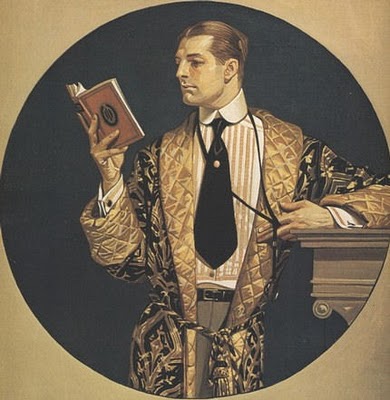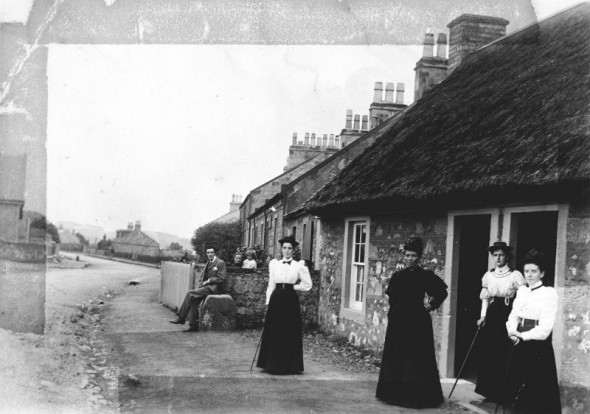It is a remarkable fact that bachelors, widowers, spinsters, and widows marry now at a greater age than formerly. The following table shows the increase in age between the years 1896 and 1908, the ages given being averages, carried to two decimal points, of all marriages in England and Wales where ages have been recorded.
|
Years 1896 to 1908 |
Ages |
|||
|
Women |
Men |
|||
|
Spinsters |
Widows |
Bachelors |
Widowers |
|
|
In 1896 the average marrying age was – – |
25.08 |
40.58 |
26.59 |
44.49 |
|
„ 1898 „ „ ,, „ – – |
25.14 |
40.59 |
26.62 |
44.70 |
|
,, 1900 „ „ „ ,, – – |
25.23 |
40.74 |
26.68 |
45.02 |
|
,, 1902 ,, „ ,, ,, – – |
25.36 |
40.25 |
26.88 |
44.96 |
|
,, 1904 „ ,, „ ,, – – |
25.37 |
40.35 |
26.93 |
45.03 |
|
,, 1906 „ ,, „ „ – – |
25.46 |
40.79 |
27.03 |
45.37 |
|
,, 1908 „ ,, „ „ – – |
25.63 |
41.02 |
27.19 |
45.69 |
From the Every Woman’s Encyclopaedia.





Hur? It doesn’t really seem like the ages changed that much….
It would be very interesting to know if the marrying age for single men and women changed as a result of the Boer War and particularly as a result of World War One. The Boer War may have left fewer men available for marriage, but it doesn’t seem to have changed the ages of the brides and grooms who did marry.
You know…I theorize that the age for first-time marriages increased because of the widening opportunities for both men and women in education and occupation. Even though common perception of a “woman’s place” held fast, I believe that working women weren’t so anxious to wed now that they’d gotten a taste of financial independence, and living on their own made them think about choosing to marry for love rather than security (add in the women who attended college). Also, men, now able to make a living in the vast colonial possessions and industries, decided to wait until they’d amassed a tidy sum before marrying.
What a great post!
And things have changed more – not a single one of my mates from school or university was married by 25, and very few by 30. We’re now about 32, and a few are taking the plunge.
Thanks! I was surprised by this chart because I’d always believed that men married for the first time at a late age, while women married fairly early (17-21). But I think things remain the same–people then and today put off marriage because they can’t afford it and they wish to take advantage of educational and career opportunities.
That list is pretty much the same as it’s been for a couple of centuries among the working class in England. The average married age of English women dropped to 16 and thereabouts between 1940s and 1970s (I can’t remember why, though. Probably linked to the emerging recognition of the ‘teenage’ period.
Anyroad, one sociologist said the 1960s still holds the youngest average marriage age record. If I remember right, late 17th century still holds the oldest average marriage age record (women: 28 and men: 32).
Thanks for stopping by Maili, and adding to the conversation. That’s interesting that the average age dropped so low during a thirty year period–maybe it was the result of WWII?
Would it be at all possible to clarify on this? I have always been under the impression that a “spinster” was somebody PAST (Italics would be nice here) the marrying age and a “bachelor” was somebody who was well eligible. Above, it says Spinsters/bachelors vs widows and widowers. I also assumed that a “widow/widower” was somebody who had lost their spouse.
You’re going off of historical romances, right? *g* Legally, any unmarried woman is a spinster, and any unmarried man is a bachelor, and it would be listed so on the marriage certificate (until 2005:http://www.telegraph.co.uk/news/uknews/4197006/Spinsters-and-bachelors-cut-from-marriage-lines.html).
You’re going off of romances, right? *g* Legally, any unmarried woman is a spinster, and any unmarried man is a bachelor, and it would be listed so on the marriage license (until 2005: http://www.telegraph.co.uk/news/uknews/4197006/Spinsters-and-bachelors-cut-from-marriage-lines.html).